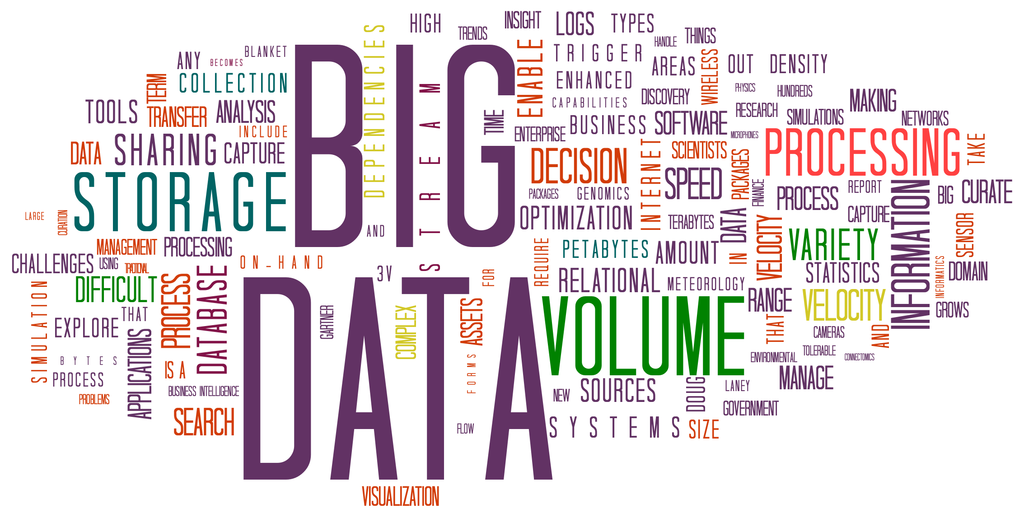

What Is Big Data And Why Is It A Big Deal?
At DataCures, we write about data and its applications in the healthcare industry. The name “big data” has come up more than once. What is exactly big data analytics and how can it benefit various industries? We felt that a brief introduction to how big data has emerged and changed our world bit by bit is called-for. With this article, we aim to put the main theme of the blog in context. In data context.
What big data actually is
The term “big data” was first coined in the early 1990s but it came into prominence only about a decade ago. Thanks to the rapid growth in the volume of data generated in the digital age. Today, there is an incomprehensible amount of data is produced and stored. In fact, in 2020, the number of bytes in the digital universe was 40 times bigger than the number of observable stars in the universe (World Economic Forum).
This explosive growth also meant that we needed to combine and process increasingly larger sets of structured and unstructured data, which eventually prompted the transformation of traditional data analysis into big data. Larger and more unbiased datasets bring better predictive performance in analytics and more applications outside of the realm of mathematics and statistics.
And so big data was born
In the 1980s-90s, database management and data warehousing gave the foundations of modern data analytics and eventually also of the concept of big data.
With the advancement of the Internet, more and more data was generated and offered unique data analysis opportunities. Web analytics-enabled studies on customer behaviour, location-based segmentation, and opinion mining. It led to better marketing decisions, customer targeting, and personalised advertising.
The focus of the last ten years in this domain was data collection from mobile and wearable devices. We collect, store and process larger and more complex datasets day by day. The biggest challenge is to extract meaningful information out of these new data sources. It became possible with the help of tools and analytics techniques.
Disrupting “business as usual”
Advanced techniques and AI solutions provide the means to uncover patterns in the huge volumes of data companies. Many industries can benefit from the valuable information hidden in big data. Although, for some of them, it was easier to implement into their daily processes than for others.
Let’s see some of the pioneers of big data analytics.

Marketing
Marketing and sales teams have been leading the ways to improve business operations using digital information of the customers. Search history, purchase history, gender, interests, and… are examples of digital information. Savvy marketers can get a 360-degree view of their audiences. They use it to improve brand awareness, create more personalised content and improve their customer acquisition.
A McKinsey survey revealed that companies that are heavy users of customer analytics are 23 times more likely to outperform their competitors in terms of new customer acquisition.
Retail and e-commerce
Retailers have been heavily relying on access to data to get predictions on demand and revenue, to improve day-to-day operations, or to send hyper-personalised product recommendations to customers.
Big data analytics can be a powerful tool for warehouses to optimise supply chains and inventory management avoiding product shortages or oversupply. Due to its less regulated nature, the retail sector had truly benefited from the advancements and availability of digital information.
Finance
Big Data in banking came a long way to disrupt the industry. For years, banks have been collecting data from traditional and digital sources, creating an electronic trail of each of their clients.
Thanks to the recent deregulations of the sector, non-banking companies can now access this data and solve non-standard business challenges. For example, relying on predictive analytics to unpack customer behaviours and spending habits proved to be an asset to both banks and non-banks as well.
While fintechs and neo-banks are disrupting the industry, many incumbents got up to speed by partnering with startups and integrating their solutions into their core offerings, outdoing their slower competitors.
Big data analytics in healthcare
The applications of big data in healthcare are endless, and we’ll continue introducing you to them on our blog.
Big-style data in healthcare refers to the vast quantities of information, health data collected from patients and populations to potentially help prevent epidemics, enhance diagnostics methods, drug discovery, reduce costs, improve treatments etc.
The sources of data are also diverse. they are including patient records, censuses, clinical data, self-reported data, wearables, clinical studies and other databases.
Lots of data, lots of potentials. On our blog, we endeavour to capture all the aspects and possibilities that data analytics, big data and AI can bring to the (healthcare) table.
Don’t miss Trend Topics of Big Data in Healthcare on DataCures!
Do you want to get a weekly summary email, that contains the most recent applications, trends, and ideas in healthcare data science and analytics? Sign up for our newsletter!


